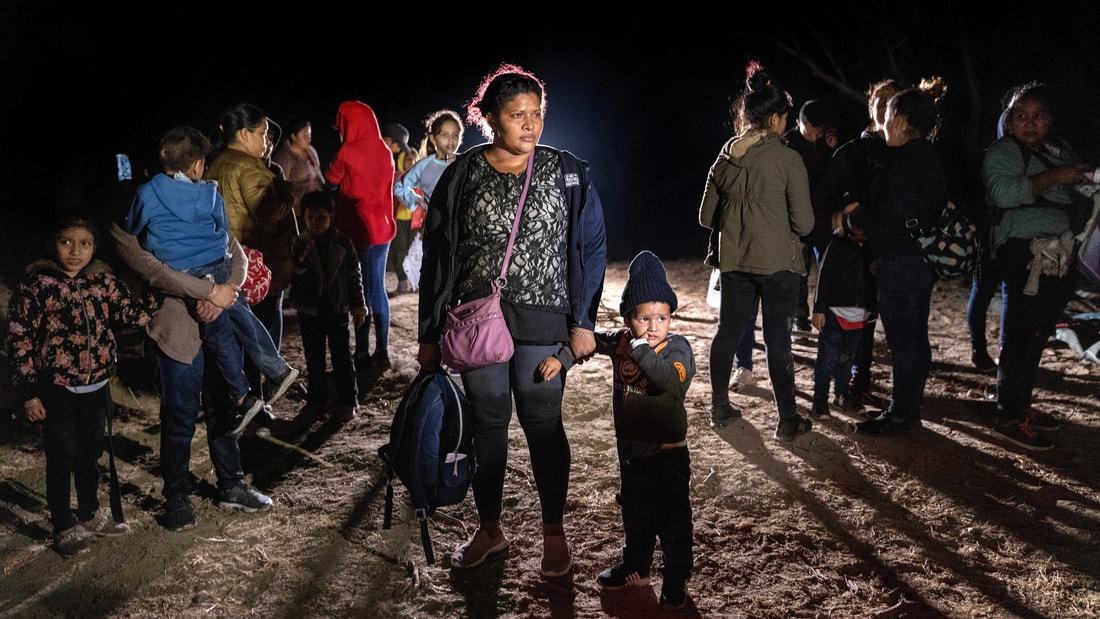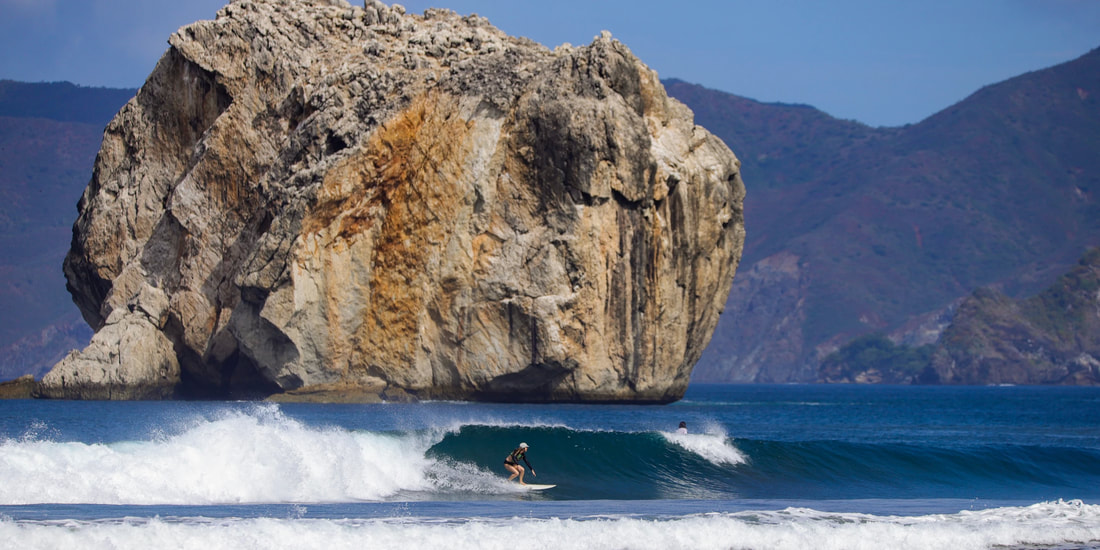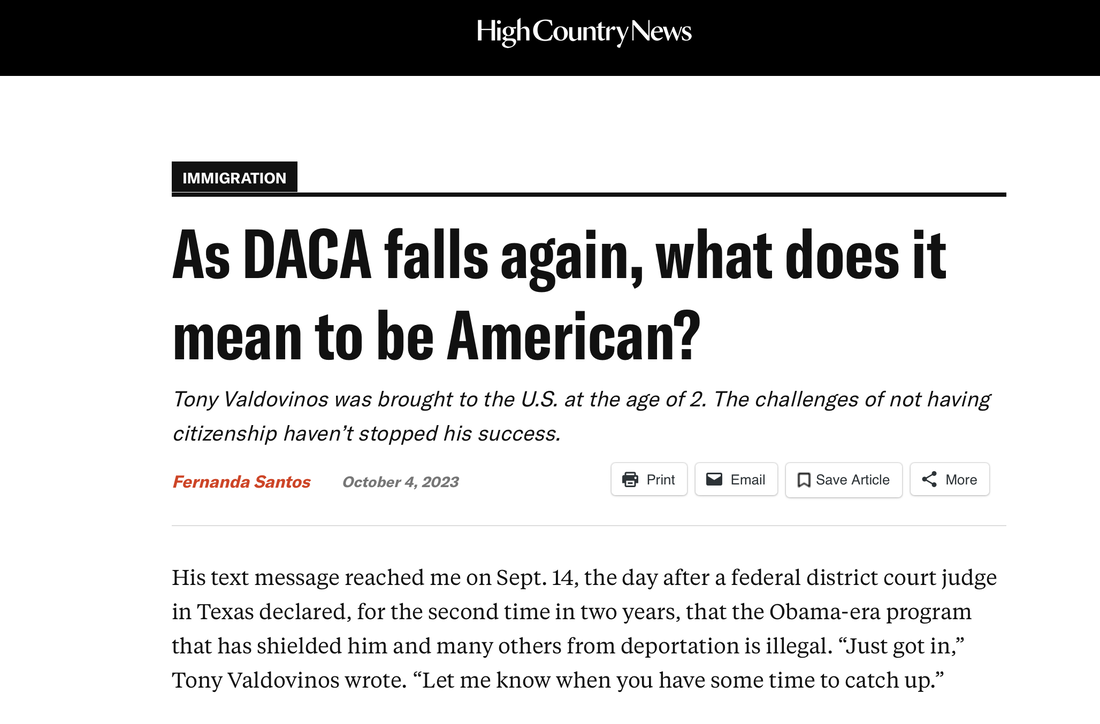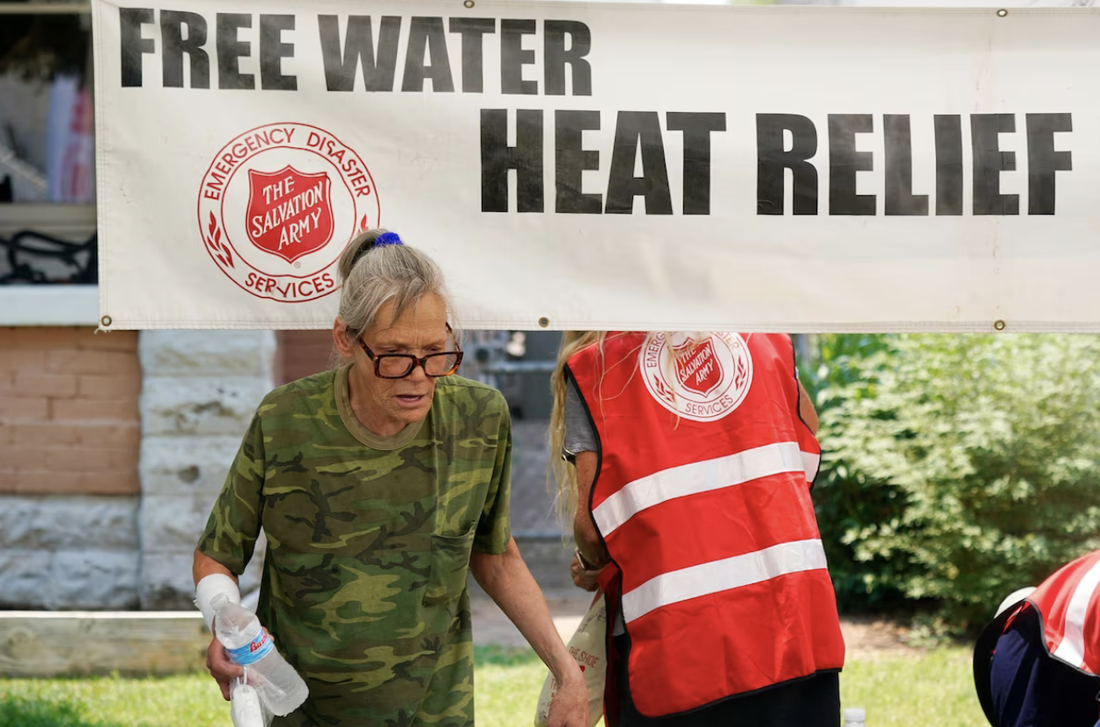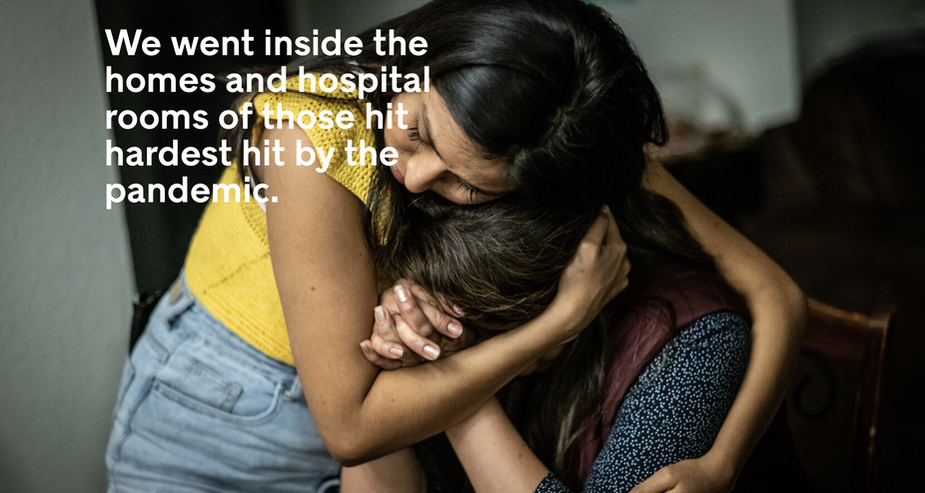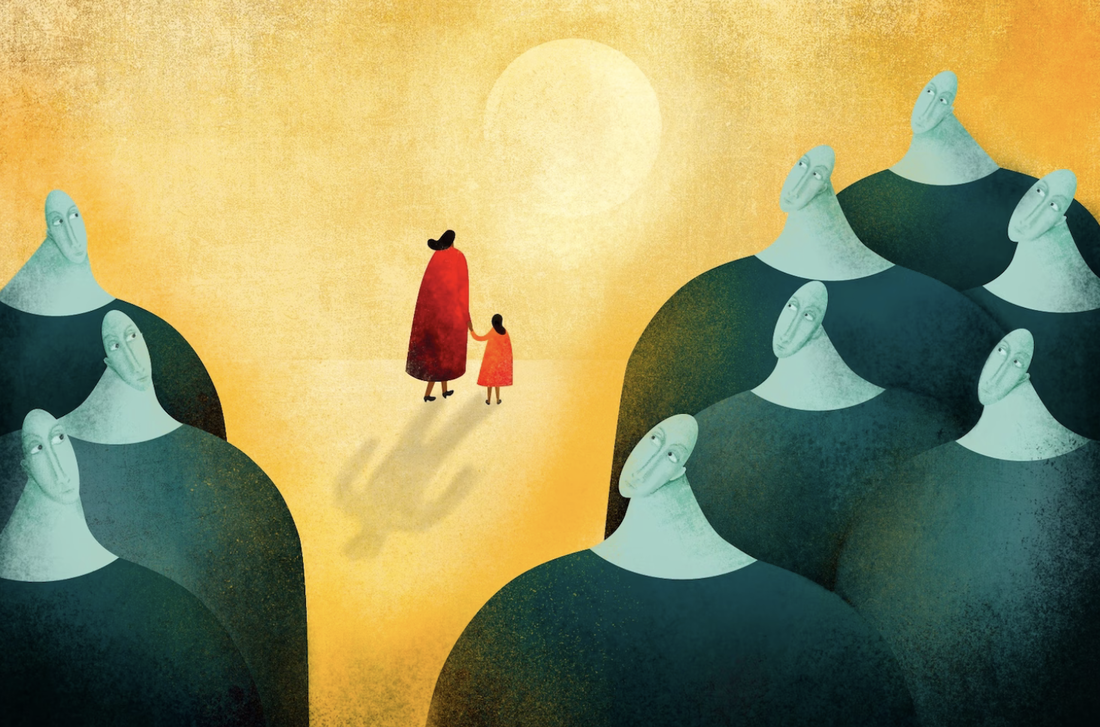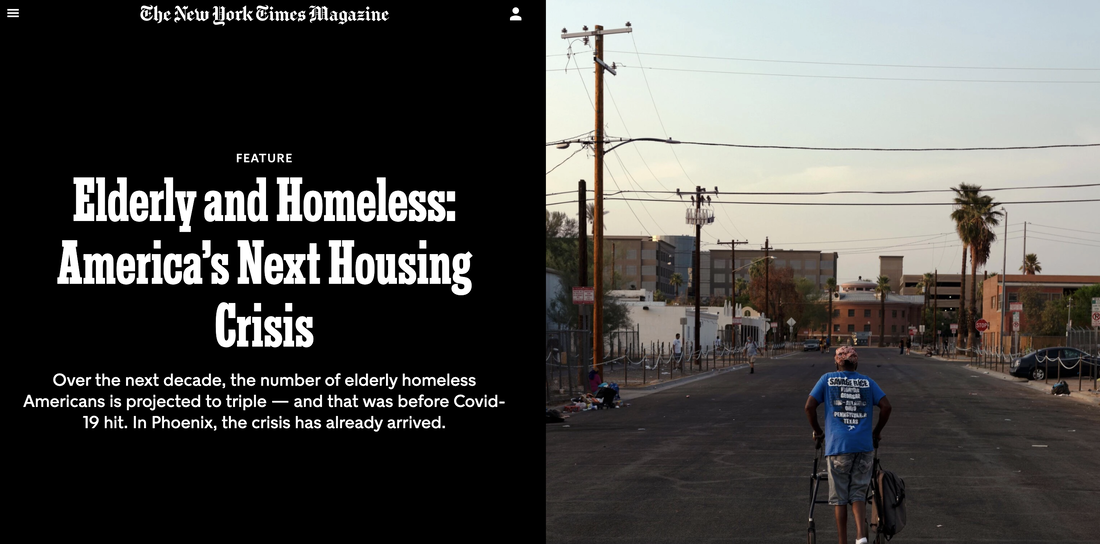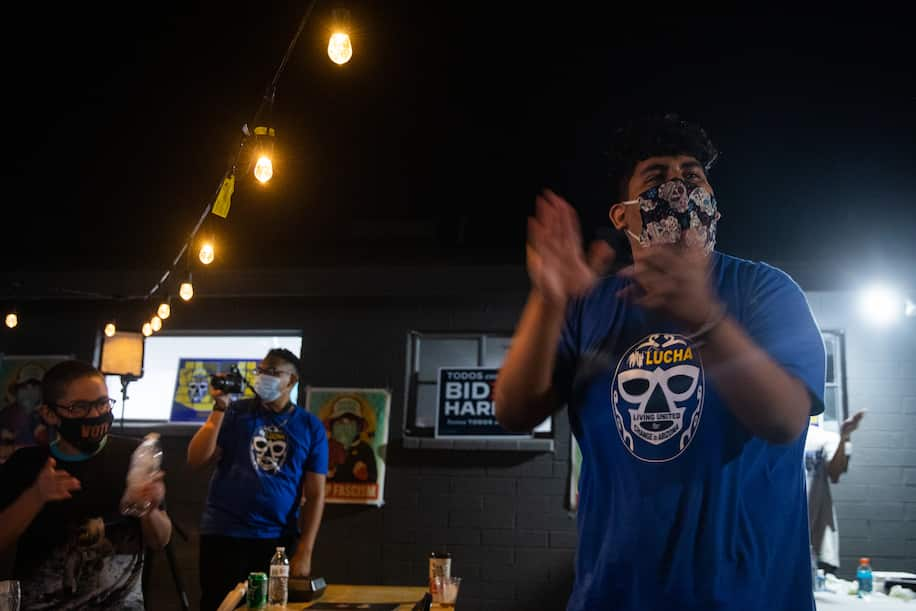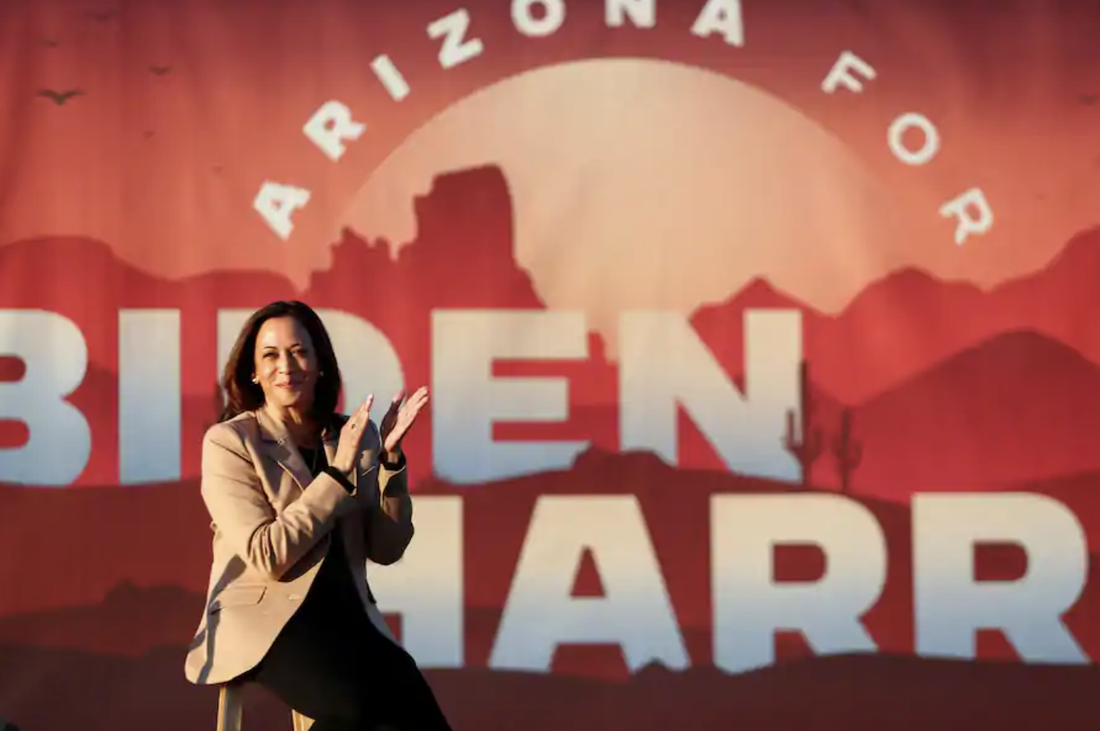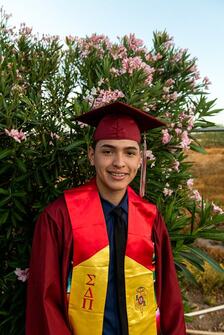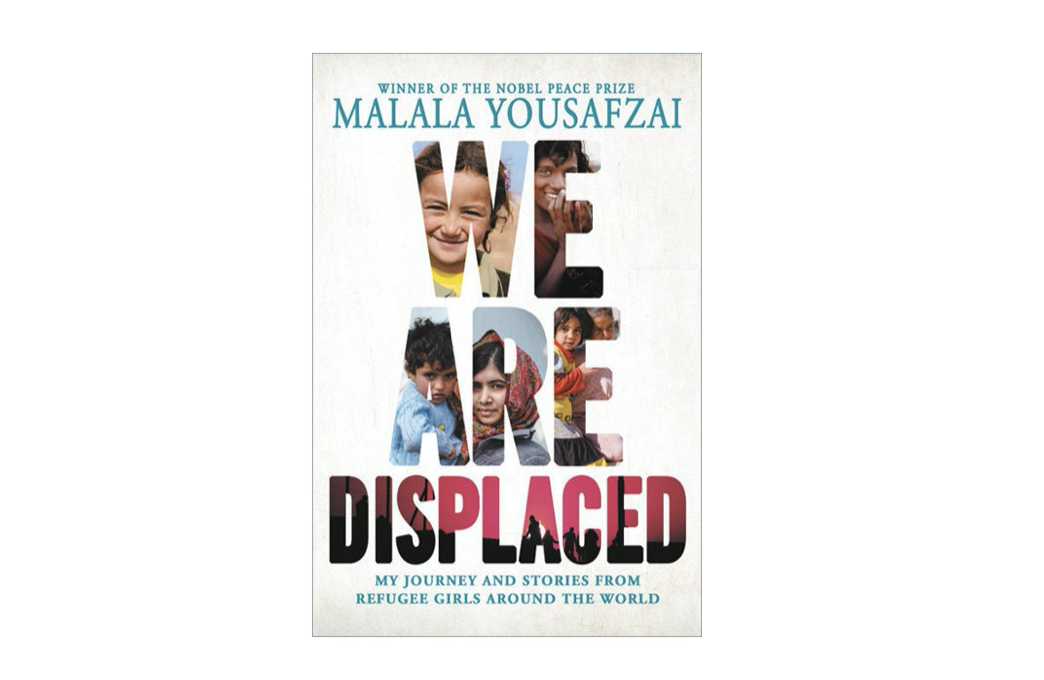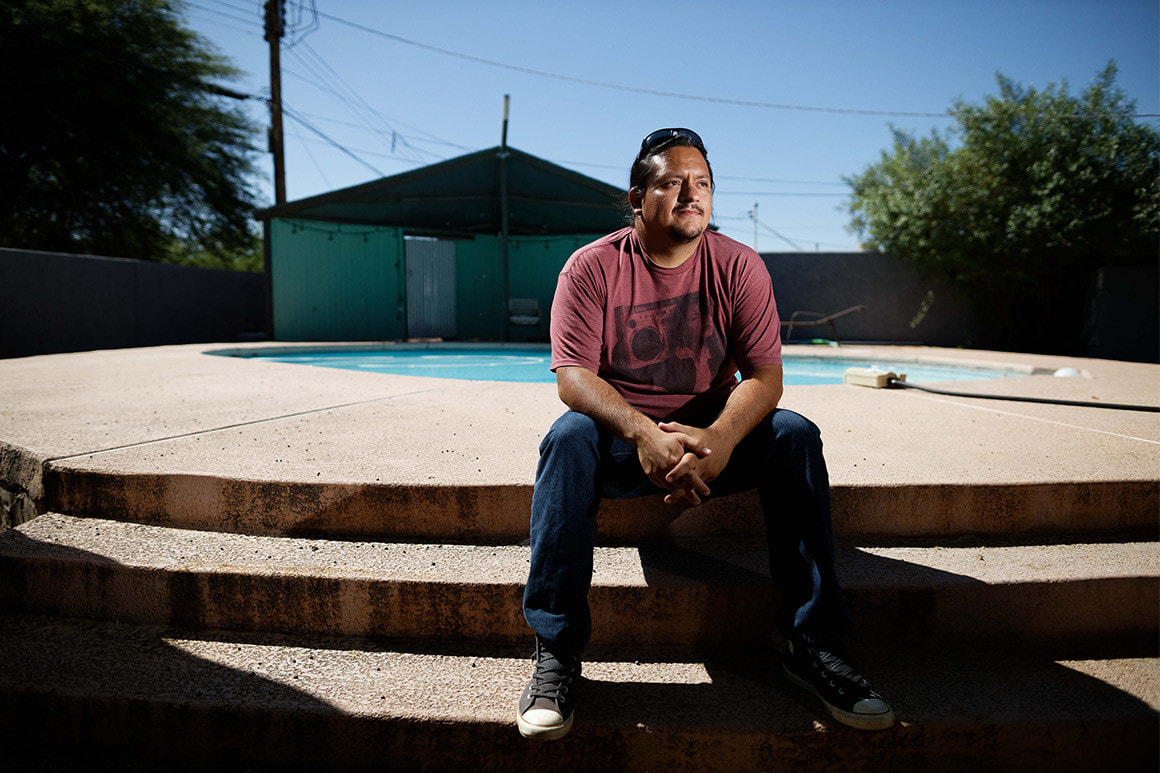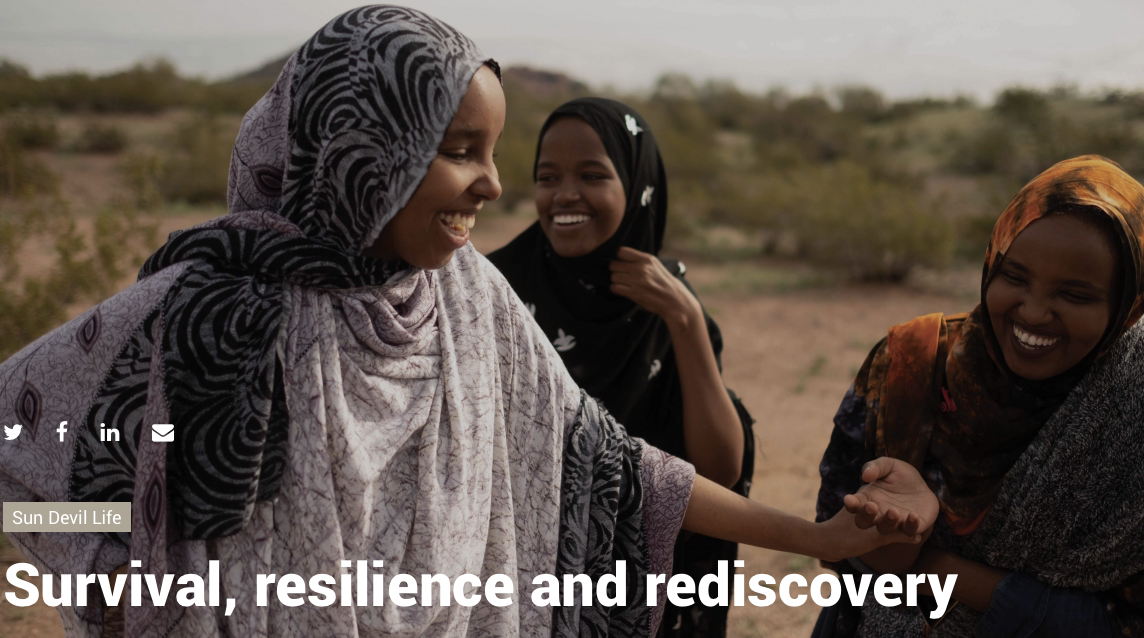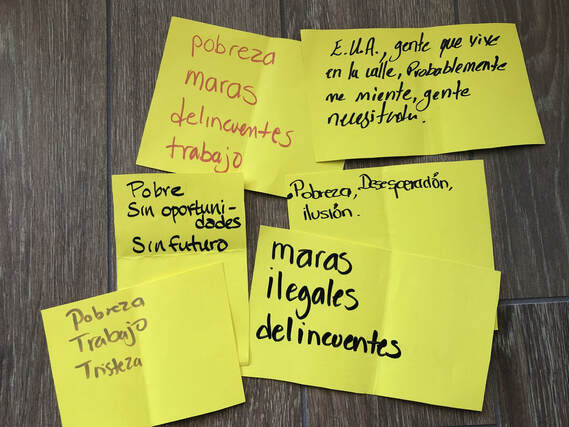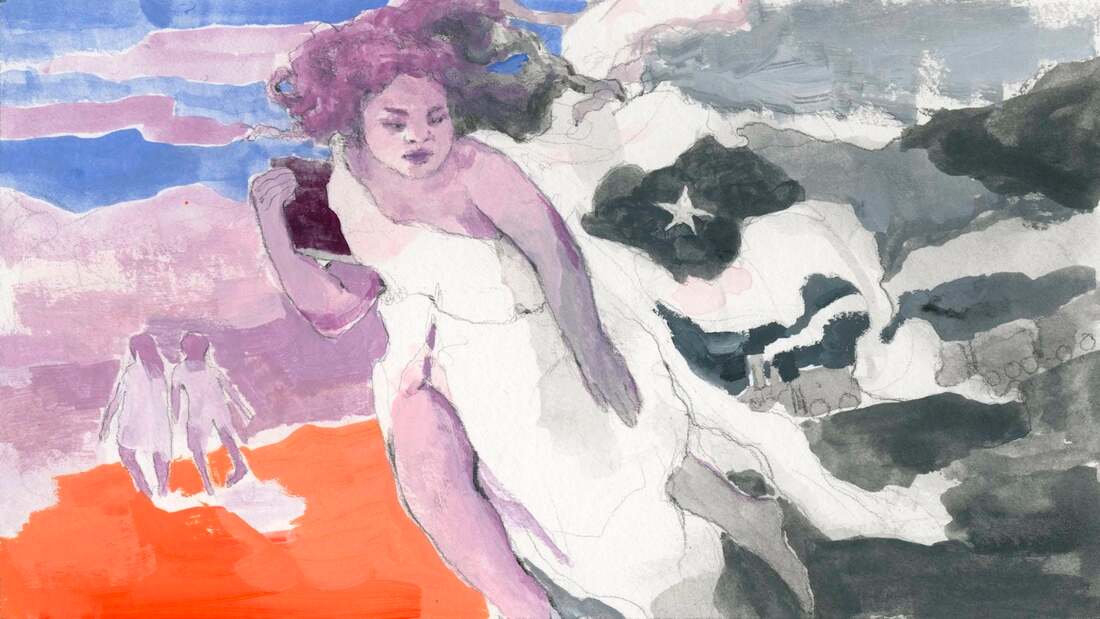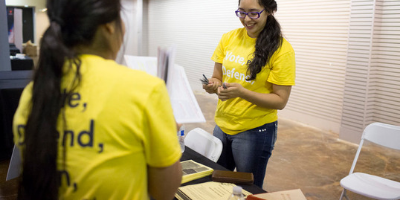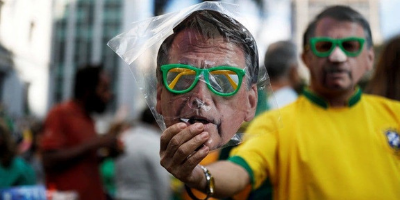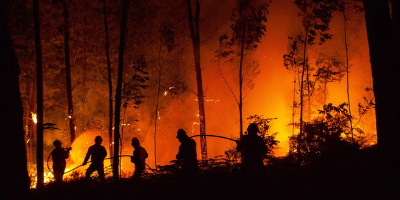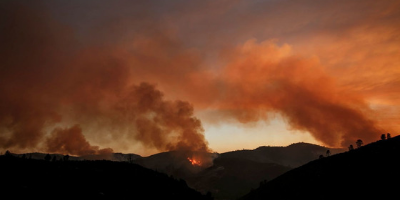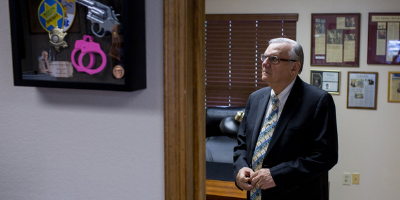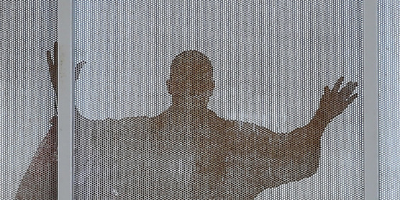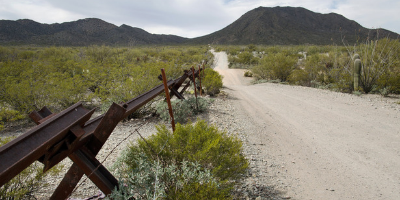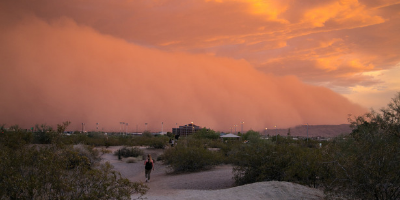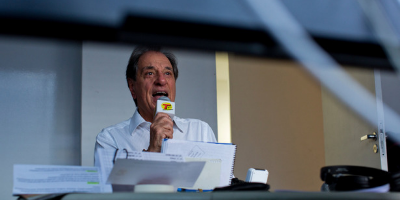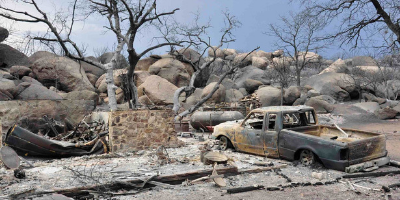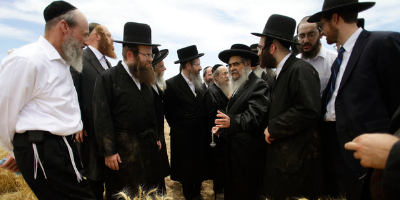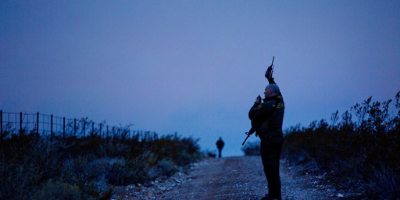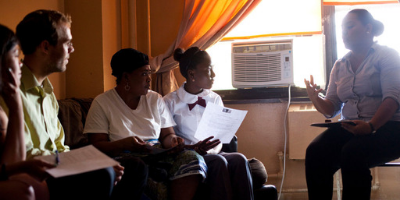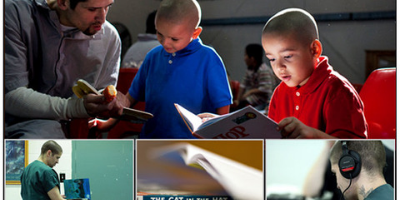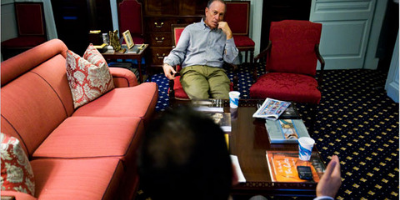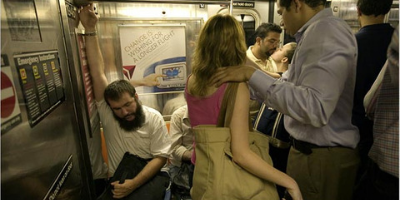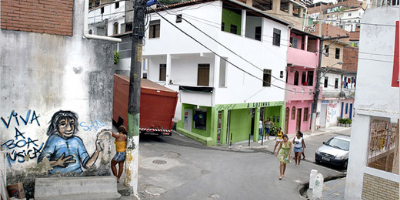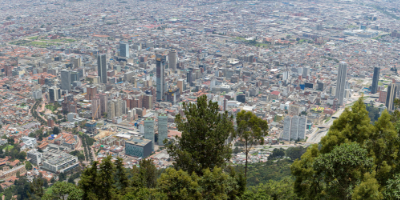Fernanda has written and edited stories in English, Portuguese and Spanish for multimedia platforms in the United States, Brazil and Mexico. She centers her work around the voices of underrepresented and misrepresented communities and also her own. Below is a selection of her stories.
How to Keep Journalists of Color in the News BusinessIn January alone, Time magazine sacked 15% of its unionized workers. Sports Illustrated announced cuts so deep its own survival is on the line. The Los Angeles Times lost about 115 journalists — roughly 20% of its newsroom staff.
Even The Washington Post, owned by one of the richest people in the world, offered to buy out 240 employees in December, less than a year after slashing 20 newsroom positions and leaving 30 more unfilled. Read here |
America’s Immigration Reckoning Has ArrivedIn the summer of 2014, I joined a group of journalists in an organized visit to a Border Patrol warehouse in Nogales, Arizona. My daughter had just turned 5 the day before. As I walked out the door, I remember using my hands to smooth out the wrinkles on her school uniform as tenderly as if I were waking her up from sleep. I remember writing my daily note to her in our shared language—Eu te amo—with an extra dose of guilt; leaving her in her father’s care was always safe and convenient, but never easy.
Read here |
Joy and Wipeouts: A Widowed Mom Finds Joy on an 8-Foot SurfboardI clipped on the seat belt, gripped the armrests, and let the tears flow as the airplane lifted off, taking me far away from my only child. The voice inside my head berated me--What have you done? But it was too late to turn around. My daughter was at sleepaway camp in Upstate New York and I was off on my own for a week at surf camp in Costa Rica, yearning to rediscover myself.
I grew up in Rio de Janeiro, slicing the waves of Barra da Tijuca and Prainha on my yellow-and-orange Morey Boogie Mach 7, my belly firmly set against its porous surface as I maneuvered along the wave’s face. It was only in the summer of 2017, in Maui, that I stood up on a surfboard for the first time. As I glided toward shore in Kihei, riding lazy baby waves, I felt powerful. I felt in control. I felt that I could do whatever I set out to do. Read here |
As DACA falls again, what does it mean to be an American?His text message reached me on Sept. 14, the day after a federal district court judge in Texas declared, for the second time in two years, that the Obama-era program that has shielded him and many others from deportation is illegal. “Just got in,” Tony Valdovinos wrote. “Let me know when you have some time to catch up.”
I first met Valdovinos in 2012. I was newly arrived in Arizona, charged with covering the Southwest as Phoenix bureau chief for The New York Times. He was effectively an Arizonan, having lived in the state since he was 2 years old. Read here |
Extreme heat isn’t a joke. It’s a public health crisis.When dangerously high temperatures become an inescapable part of life in Phoenix every year, people bring out a tired old joke: “It’s a dry heat.”
Sure, there’s some truth to that, but when the high temperature is well over 100 degrees for days on end, as it is now, low humidity doesn’t mean much: Each day is just brutally, menacingly hot. And, in any case, the line is amusing only if you’re privileged enough to confine your existence to a finely air-conditioned home, car and workplace, with the occasional dip in the pool. Read here |
Life, Death and Grief in Los AngelesWith more than 10 million residents, Los Angeles County is the most-populous county in the United States. It is a world of extremes, with multimillion-dollar mansions at one end and cramped apartments housing multiple generations of the same family at the other. As the coronavirus once again tightened its grip around the region late last fall, it struck with stark precision the county’s poorest and neediest residents: older Black people in South Los Angeles, Pacific Islanders in Inglewood, Latinos toiling in obscurity in essential jobs throughout the city.
Read here |
I didn’t see the insidious ways women are held back — until I became a widowPhoenix has extremely hard water. I was recently reminded of this when I had to replace my washing machine, which was damaged to the point where repairs made no financial sense. I bought a state-of-the-art model with more settings than I have learned to use and invested in a water softener to extend the life of the new washer. These are just a few of several home improvements I’ve made and paid for since my husband died three years ago.
Read here |
I Felt Safe in America. Until El PasoA good friend who is moving to Chicago had a going-away party at a downtown brewery recently and I stopped by to say goodbye. He is an artist from Iraq who escaped to the United States in 2013 to save his life. In Iraq, Mahdi Army loyalists had chased, beaten and threatened him because he had dared to sketch nude pictures — practice for his entrance exam at Baghdad University’s College of Fine Arts. Here, he is free.
Read here |
Elderly and Homeless: America’s Next Housing CrisisPolicymakers had decades to prepare for the momentous demographic shift prompted by the aging of the baby boom generation, but the social safety net has only frayed under a relentless political pressure to slash funding for programs that senior citizens rely on to make ends meet, like subsidized housing, food and health care. Early in 2020, researchers published a sobering projection: In the next 10 years, the number of elderly people experiencing homelessness in the United States would nearly triple, as a wave of baby boomers who have historically made up the largest share of the homeless population ages. And that was before a pandemic arrived.
Read here |
Arizona just showed the right way to harness the power of Latino votersArizona puts the lie to the notion that national political committees can swoop in every two or four years, cut some Spanish-language ads and claim Latinos as allies to their preferred candidates. Instead, our experience shows, they should follow the lead of local Latino grass-roots organizers — who here have seized on the issues that matter to their communities to build broad, winning political coalitions.
Read here |
The real reason Arizona will turn blue this yearWhat the pundit class fails to grasp is that this is a state of fluid plurality, a place where the very definition of “American” is changing as the lines blur and the walls that have long safeguarded a monochromatic hold on power have begun to crack. Several identities often apply to the same person, making it a mistake to attribute changes in Arizona’s political DNA to the work of any one group of voters.
Read here |
In Memoirs, Two Reporters Plumb Their Latina Identity and HeritageIn their new memoirs, the Emmy Award-winning journalists Ilia Calderón (“My Time to Speak”) and Maria Hinojosa (“Once I Was You”) embrace their whole selves to offer evocative portrayals of their experiences as women of color in an industry where whiteness is still a factor in determining who gets first dibs on opportunities that pave the way to the top. These are distinctive narratives in tone and approach, ushering readers through time and space in situations where the authors are often defined by their status as immigrants and Latinos.
Read here |
What You Can Learn From a Dreamer in ArizonaAngel Palazuelos donned a maroon cap and gown one recent afternoon, one of two colors of his alma mater, Metro Tech High School, where almost every student is an immigrant or comes from a family of immigrants. The school is part of the Phoenix Union High School District, one of the largest in the country and one whose enrollment reflects Arizona’s impending demographic destiny as a majority Latino state.
Read here |
What Do You Say When Someone Loses Their Job?The gym where my partner worked closed its doors on March 17, the day Gov. Doug Ducey of Arizona echoed to business owners in the state the social-distancing recommendations from the Centers for Disease Control and Prevention to limit gatherings to fewer than 10 people.
“We’re going to be closed for a couple of weeks,” Clint told me in the overly cheerful tone of a man trying to convince himself to believe something he knows isn’t going to happen. Read here |
Reframing Refugee Children’s StoriesAs an immigrant living in Arizona, a state that has come to be defined by its ugly history with immigration, I try to teach my bilingual, bicultural daughter — she was born in the United States to an American father and a Brazilian mother — to judge people by what we have in common. Moving around, for one thing: So many of us move to new cities or countries, new schools or new homes, and not always by choice. Movement means disruption, and every disruption forces us to learn and adapt. It forces us to grow.
Read here |
Joe Arpaio's Surprising Legacy in ArizonaNaruro Hassan took a seat among 10 other undergraduate research fellows in John Carlson’s “Inquiry into Religion and Conflict” course one sweltering morning in August 2017, a student like all others who qualified for the program, but also a student unlike any other in class. Carlson, interim director of Arizona State University’s Center for the Study of Religion and Conflict, recalls Hassan’s colorful hijab, bright red lipstick and Converse sneakers peeking out from the rim of her floor-length skirt. Maria Dooling, one of the fellows, remembers her booming voice, commanding attention.
Read here |
Who Will Wear My Dead Husband’s Clothes?My husband and I shared a narrow, shoebox-shaped closet in our home here, his clothes facing mine from double-hanging wardrobes mounted on the walls. After he died of pancreatic cancer on Nov. 1, 2017, a month after his diagnosis, I’d often wander into the closet to search for his smell on his shirts. My mother caught me one day sniffing his shirts and crying, and said, “You can’t keep doing this forever.”
Read here |
Survival, resilience and rediscoveryNaruro Hassan took a seat among 10 other undergraduate research fellows in John Carlson’s “Inquiry into Religion and Conflict” course one sweltering morning in August 2017, a student like all others who qualified for the program, but also a student unlike any other in class. Carlson, interim director of Arizona State University’s Center for the Study of Religion and Conflict, recalls Hassan’s colorful hijab, bright red lipstick and Converse sneakers peeking out from the rim of her floor-length skirt. Maria Dooling, one of the fellows, remembers her booming voice, commanding attention.
Read here |
I Felt Safe in America. Until El Paso.That sense of safety changed when a young white man opened fire in a Walmart in El Paso last Saturday, making targets out of brown-skinned people. I read the suspect’s manifesto Sunday morning and, for the first time, I did not feel just like an immigrant. I felt like a target. I looked at my 10-year-old daughter eating the chocolate-chip pancakes I’d made and realized that she could be a target too. Citizenship, it turns out, is an illusory shield. In the eyes of that gunman, I am not American but an invader, an instigator. It is because of people like me that he did what he did.
Read here. |
Hacia la coherencia periodística: el caso del fenómeno migratorioLa imparcialidad se logra solo si reconocemos nuestros propios prejuicios y apuntamos a controlar la subjetividad. En otras palabras, hay que armar un propio sistema de frenos y contrapesos entre las creencias y opiniones, y usarlo para regular la cobertura periodística.
Leelo aquí. I spent a few days this summer training a group of journalists in the border city of Ciudad Juárez, Mexico, on how to report on the Central American migrants stuck there because of Trump. This is the English translation of an opinion piece I wrote for Mexico's Animal Politico, where I talk about the bias I found in the coverage and how I suggest addressing it. Read here. |
|
Art by Jia Sung
|
"The Best Kind of People": Shifting the Definitions of Citizenship and the Making of ArizonaFor a century, Anglos from cold corners of the country have been lured here by the promise that this was a place where they could live among their own, in communities with nary a brown person in sight.
Read here |
Arizona’s Scarred GenerationAracely Nuñez and Dalia Luque are both the children of Mexican immigrants who entered the country illegally and settled in Phoenix. They’re strangers, with stories that echo each other.
Read here |
Photo by Caitlin O'Hara/The New York Times
|
|
Photo by Nacho Doce/Reuters
|
How Fake News Fuels My Family’s Support for Brazil’s Right-wing CandidateI was born during the military dictatorship in Brazil, but in 1989 I became eligible to vote and cast my first ballot in the first direct presidential elections since the return of democracy. In 1992, I joined tens of thousands of demonstrators who took to the streets to demand the ouster of the president I had helped elect; he eventually resigned, under a cloud of corruption. In 1998, I moved to the United States, leaving the Brazil of my past frozen in memory and time.
Read here |
The Times’s Resident Expert for a World on Fire
The email landed almost as soon as I woke up on Father’s Day in Phoenix, where I work as bureau chief. Bryant Rousseau, an editor on the International desk, asked if I could help out on a story about the wildfire that killed at least 64 people in Portugal, including many who were trapped inside their cars.
Read here |
Photo by Pablo Blazquez Dominguez/Getty Images
|
|
Photo by Los Angeles Times
|
Some Wildfires Simply Can't Be FoughtThere is a cadence to fire season and a predictability to the headlines: A wildfire is burning, homes are threatened, residents are urged to evacuate. We've grown used to watching the air-and-ground assaults. The image of a DC-10 dumping retardant on burning brush is an indelible symbol of our attempt to control nature. We've come to expect that firefighters will bring flames into submission because they so often have — and this has made us comfortable.
Read here |
Since Ouster, Sheriff Arpaio Has Lots of Time, but Not for Regrets
Joe Arpaio, the onetime sheriff in this part of the West, still talks about his former job, the one he was unceremoniously ousted from last fall, in the present tense. Pushed into retirement by voters who tired of his colorful ways, Mr. Arpaio has gone from being a public official working 14-hour days to a civilian with a mostly empty calendar.
Read here |
Courtney Pedroza for The New York Times
|
|
Photo by John Moore/Getty Images
|
The Road, or Flight, From Detention to Deportation
During his frenetic first week in office, President Trump made good on a core campaign pledge to overhaul the nation’s immigration enforcement. With the stroke of a pen, he redefined the meaning of “criminal alien” by vastly expanding the criteria used to decide who is a priority for deportation.
Read here |
Border Wall Would Cleave Tribe, and Its Connection to Ancestral Land Image
The phone calls started almost as soon as President Trump signed his executive order, making official his pledge to build a wall to separate the United States from Mexico.
Read here |
Photo by Nick Cote for The New York Times
|
|
Photo by Dave Seibert/The Arizona Republic
|
Swirls of Dust and Drama, Punctuating Life in the Southwest
The best way to explain a haboob is to say it is a tsunami of sand, in the sense that there is no stopping it or outrunning it. It is a supreme spectacle. The fierce winds that precede it make the leaves on palm trees stand as if they are hands waving an effusive goodbye, the sky darkens and the world takes the color of caramel as the dust swallows everything in its path.
Read here |
A Chorus of ‘Goooooool,’ the Siren Song of SoccerHaving caught his first big break on radio 50 years ago, José Carlos Araújo, who had honed his sportscasting skills by calling button soccer games in a neighbor’s backyard, figured he would have to tame his changing voice to avoid losing his pitch halfway through the effusively long cries of “goooooool” that are the hallmark and necessity of a Brazilian play-by-play announcer’s routine.
Read here |
Photo by Marizilda Cruppe/The New York Times
|
|
Photo by Todd Tamcsin/Reuters
|
A Painful Mix of Fire, Wind and Questions
They trained their eyes on the mountain that smoldered in the distance as they carved a path through a forest choked by fire and drought. The ground crackled underfoot. Packs sagged from their backs, heavy with the gear frontline firefighters must carry: pickaxes, temperature gauges, spades, radios, plenty of water.
Read here |
Arizona Is Fertile Ground for New York MatzoHere, on a Christian farmer’s land five miles from the Mexican border, lies the holiest of fields for some of New York’s most observant Orthodox Jewish communities. Wheat harvested on these 40 acres is destined to become matzo, the unleavened bread eaten by Jews during the eight days of Passover.
Read here |
Photo by Joshua Lott for The New York Times
|
|
Photo by Todd Heisler/The New York Times
|
In Desert Outposts, Border Agents Keep WatchA white pickup truck rumbled along the barbed-wire fence that divides the United States and Mexico, toward a crude gate nicknamed Mingas, carved by drug smugglers to bring their loads across the border.
Read here |
Before the First School Bell, Teachers in Bronx Make House CallsJASON McCORKLE, all of 11, stepped back into his family’s living room in the South Bronx wearing the gray slacks and crisp white shirt his new teachers had just handed him, tags still dangling from a sleeve. He puffed out his chest, stuffed his hands in his pockets and flashed his pearly teeth, standing near a poster of a beachfront mansion, a five-car garage and the words “Justification for Higher Education” lighted by rays of sunshine.
Read here |
Photo by Michael Nagle/The New York Times
|
|
Photo by Todd Heisler/The New York Times
|
‘Daddy, Read for Me’THERE once was a man who read an unabridged dictionary from cover to cover to keep from losing his mind. Solitary confinement can do that to you, make you read what you would never look at on the outside, and then read more and more of it, to preserve your sense of humanity, maybe, but certainly to maintain whatever flimsy connection you hold to the world beyond your prison cell.
Read here |
Shaping a Mayor’s Spanish, Not His IdeasThe men sat at opposite ends of a coffee table speckled with a half-dozen books — on the history of New York’s municipal lawyers, on the subway system’s rich architecture. Their legs stretched out, left foot resting on the right, they were mirror images of disparate worlds: the tutor, an immigrant from Colombia, with his student, the mayor of New York, face to face for 90 minutes in an elegant chamber at City Hall.
Read here |
Photo by Andrew Henderson/The New York Times
|
|
Photo by James Estrin/The New York Times
|
Vindicated by DNA, but a Lost Man on the OutsideAs a boy, Jeffrey Mark Deskovic could swim the length of a pool underwater without coming up for air. On sultry days at the Elmira state prison, where he spent most of his 16 years behind bars for a rape and murder he did not commit, Mr. Deskovic would close his eyes under a row of outdoor showers and imagine himself swimming.
Read here |
To Be Black at Stuyvesant HighLIKE a city unto itself, Stuyvesant High School, in Lower Manhattan, is broken into neighborhoods, official and otherwise. The math department is on the 4th of its 10 floors; biology is on the 7th. Seniors congregate by the curved mint wall off the second-floor atrium, next to lockers that are such prime real estate that students trade them for $100 or more. Sophomores are relegated to the sixth floor.
Read here |
Photo by Emily Berl /The New York Time
|
|
Photo by Márcio Lima/The New York Times
|
Musician Changes Tone of Impoverished VillageFrom a veranda at Candyall Ghetto Square, a recording studio and rehearsal space for his percussion band Timbalada, the musician Carlinhos Brown appraised the contrasting worlds that define the neighborhood where he grew up.
Read here |
Disarmed Colombia fighters try to get alongThe men sat on wobbly chairs in the courtyard, behind a rusty iron fence that delimits their comfort zone. The streets outside hold the lure of city life, but most of the ex-combatants resist temptation rather than risk, unarmed, what could be a fatal encounter with a rival.
Read here |
|
Photo by Brian Snyder/Reuters
|
Arizona Nunca MaisA imigrante mexicana Abril Gallardo tinha apenas 6 anos quando o Arizona elegeu pela última vez um candidato democrata à Presidência dos Estados Unidos, Bill Clinton, em 1996. Naquele tempo, seus pais, Raul e Sandra, eram lavradores no estado da Baja California, no México, movidos em seu labor diário pelo sonho de uma vida melhor para seus filhos. Com o passar dos anos, eles se convenceram de que esse sonho só poderia ser realizado “en el otro lado” – do outro lado da fronteira, nos Estados Unidos.
Read here |

